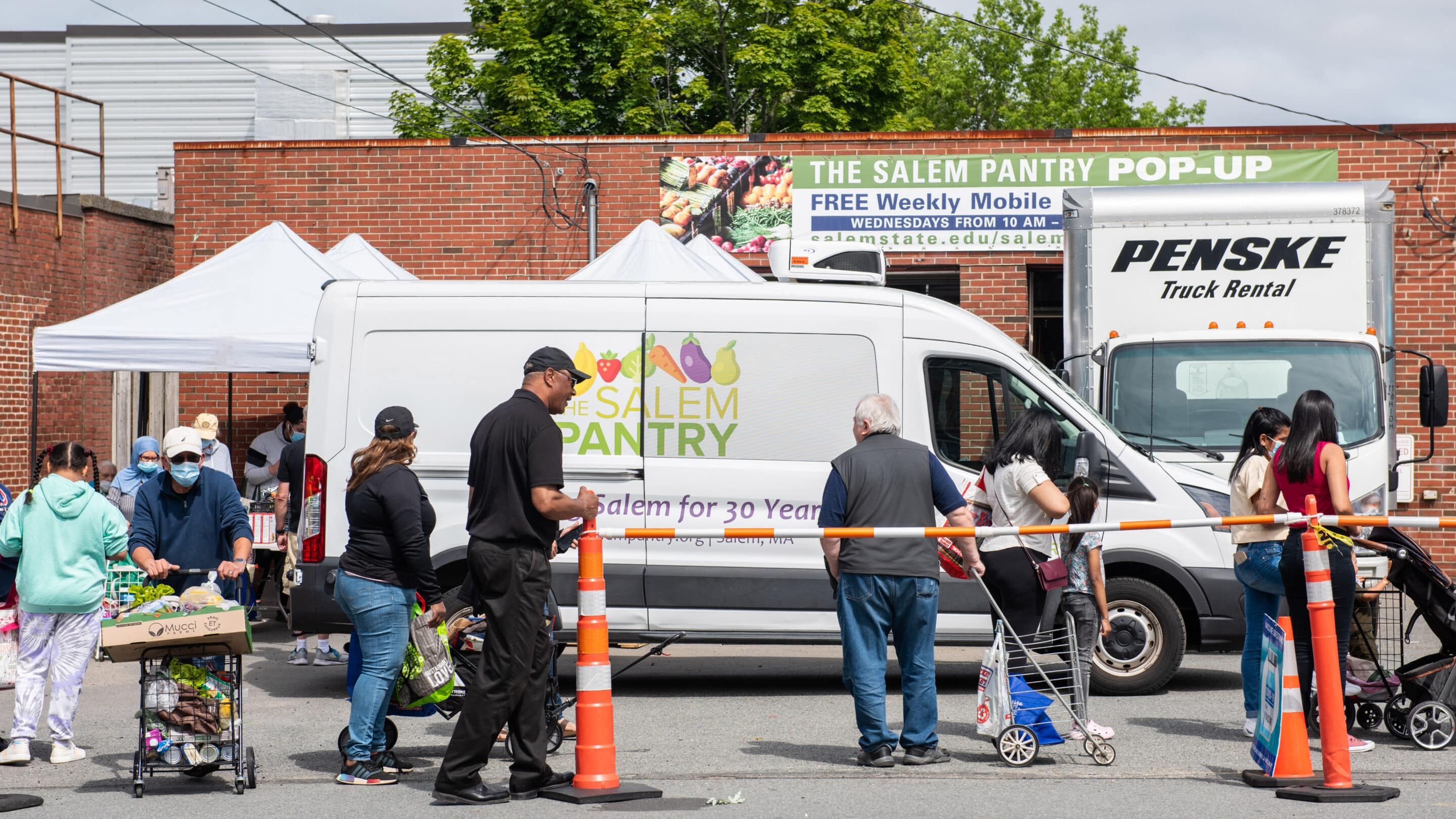In 2022, 33% of households in Massachusetts faced food insecurity.
Food insecurity, defined as a lack of consistent access to enough food for every person in a household to live an active, healthy life, remained high in Massachusetts last year, up from 30% in 2020.
At The Salem Pantry, we’ve been diving deep into the annual statewide report from The Greater Boston Food Bank, which has shed light on the food insecurity crisis in Massachusetts.
Key Takeaways
Here are three key takeaways from the 2022 data.
Disproportionate Impact on Communities of Color
The report reveals 50% of Black households and 61% of Hispanic households faced food insecurity in 2022, compared to 28% of White households. Although the percentage of black households decreased from the previous year, the percentage of Hispanic households remained the same.
Additionally, the data highlighted higher food insecurity rates among children from Black and Hispanic households, with 42% of Black children and 53% of Hispanic children experiencing hunger, skipped meals, or whole days without food because there was not enough money for food.
Increased Usage of Food Pantry Services
Among Massachusetts households facing food insecurity, 51% used food pantry services for assistance, marking a rise from 46% in 2021. 54% of new clients reported an increased cost of groceries as a primary reason for seeking out pantries. Furthermore, there was an increase in pantry usage among food insecure households with children, with 60% using pantry services, compared to 55% in 2021.
SNAP Benefits Provide Relief for Food-Insecure Households
In Massachusetts, 56% of households experiencing food insecurity relied on the Supplemental Nutrition Assistance Program (SNAP) for monthly funds to purchase food.
Unfortunately, the emergency COVID SNAP allotment program, providing extra benefits each month, was discontinued in early 2023 due to a new government spending bill. As a result, Massachusetts families faced an average cut of $151 in monthly benefits. This cut, along with the increased cost of groceries-caused an increase in pantry visits not only at The Salem Pantry but nationwide.
We at The Salem Pantry see the facts from this data reflected in the community we serve. Households across Massachusetts, on The North Shore, and in Salem continue to find themselves having to choose between food and paying for other expenses, including utilities, rent or mortgage, and transportation.
We remain committed to providing a reliable source of fresh, healthy food to nourish and combat food insecurity in our community.
